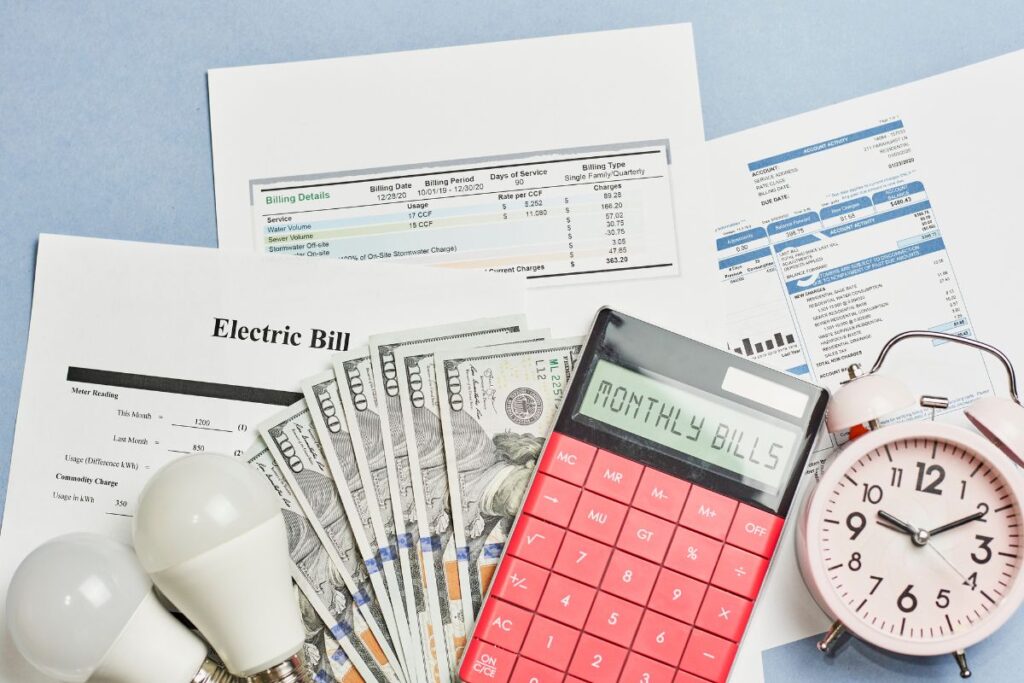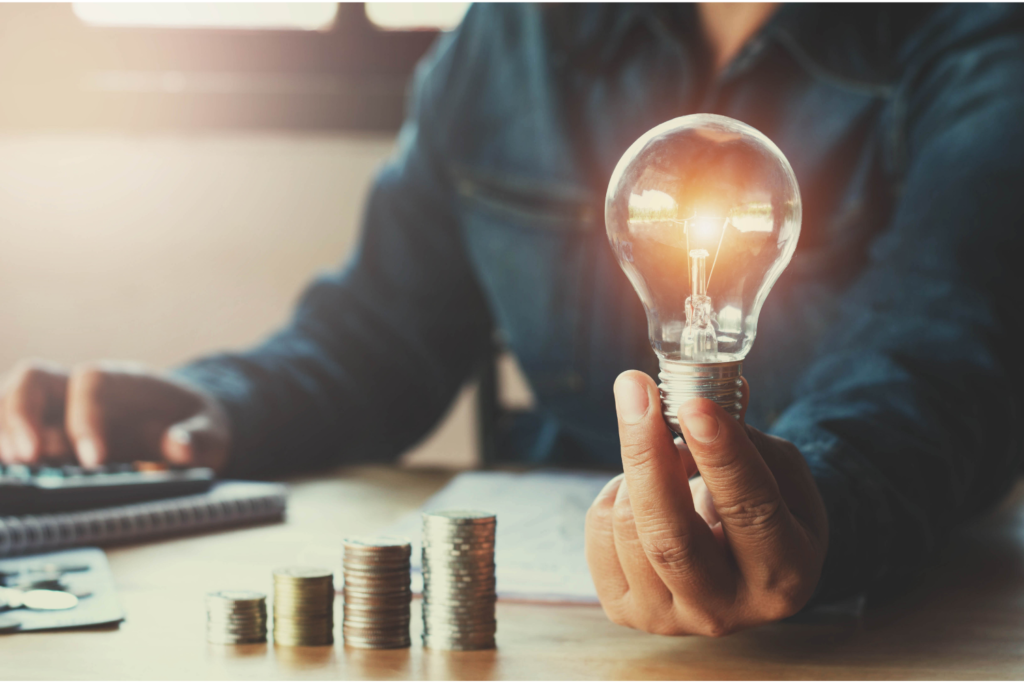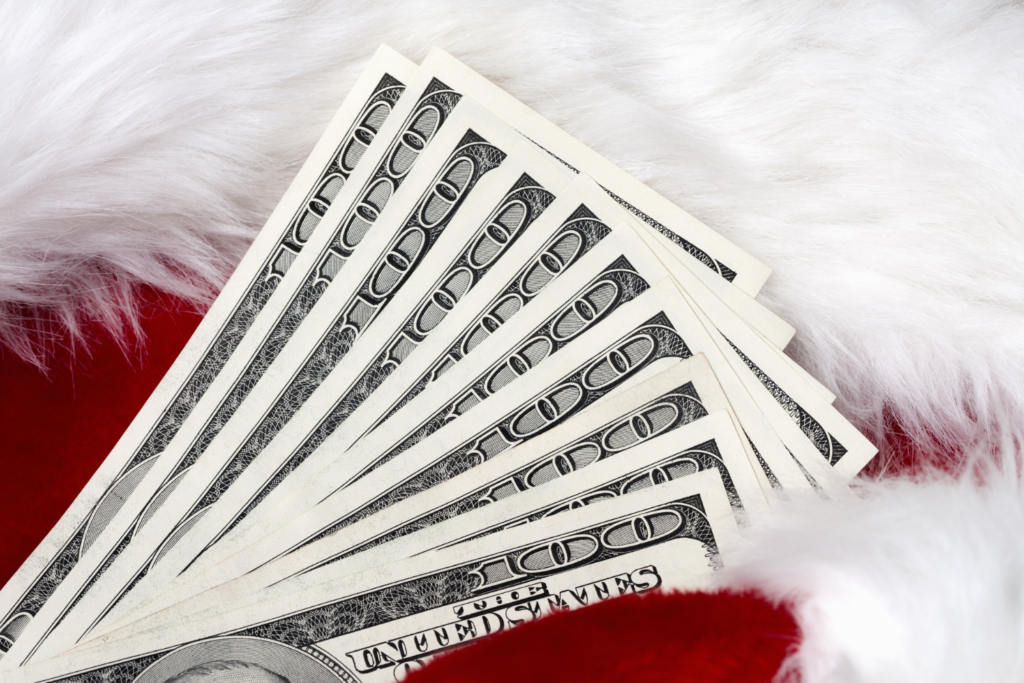
Utility bills can be one of the largest expenses for households. According to the US Energy Information Administration, American households spend an average of $2,060 per year on utility costs. Fortunately, there are several strategies you can use to reduce your utility bills and save money. Let’s take a look at some of them.
Contents
- 1. Unplug Unused Appliances
- 2. Use Less Hot Water
- 3. Consider a Tankless Water Heater
- 4. Replace Old Appliances
- 5. Keep Appliances Away From Warm Air & Direct Sunlight
- 6. Switch To LED Lighting
- 7. Install a Programmable Thermostat
- 8. Close Registers In Unused Rooms
- 9. Change Filters Regularly
- 10. Add Flap To Dryer Vent
- 11. Use Thermal Insulated Curtains
- 12. Insulate Garage Door
- 13. Install Solar Panels
- 14. Insulate Your Home
- 15. Add Door Sweeps
- 16. Use a Clothesline
- 17. Cut the Cable Cord
- 18. Take Advantage of Tax Credits and Rebates
- 19. Energy Audit
- Bonus! 20. OhmConnect
- Conclusion
1. Unplug Unused Appliances
Many electronics and appliances still draw small amounts of energy even when they’re not in use. Unplugging unused devices or using a smart surge protector can help reduce the energy used by these devices while still keeping them available if needed.
2. Use Less Hot Water
Hot water can be a major contributor to your utility bills. Switching from hot to warm or cold when washing clothes and dishes can reduce energy consumption significantly. Installing a low-flow showerhead can also help reduce the amount of hot water used in showers, resulting in lower costs and energy savings. Also, taking shorter showers helps cut costs.
3. Consider a Tankless Water Heater
Tankless water heaters are more efficient than traditional models, as they only heat the water when it is needed. This helps to reduce energy costs and save money on utility bills. Investing in a tankless water heater can have a dramatic effect on your monthly energy costs.
4. Replace Old Appliances
Older appliances are often inefficient and use more electricity than newer models. Replacing an old refrigerator or washing machine with a new, energy-efficient model can lead to significant savings on your utility bills. Look for “Energy Star” products when shopping. According to Energy Star, appliances with their label can reduce your energy bills by up to 30%, equating roughly to an annual saving of $600.
5. Keep Appliances Away From Warm Air & Direct Sunlight
Keeping your appliances away from direct sunlight or close to a heat source can cause them to work harder and use more energy. Make sure to keep them in well-ventilated and cool places for optimal energy efficiency.
6. Switch To LED Lighting
Switching from traditional incandescent lighting to LED lighting is one of the simplest ways to lower your monthly electric bill. LED bulbs use up to 90% less electricity than their incandescent counterparts and last up to 20 times longer. This means you won’t have to replace them nearly as often – saving you both time and money in the long run!
Philips Hue Smart Lighting Dupes
According to Carter Seuthe, CEO of Credit Summit, LIFX LED light bulbs are a great alternative to Hue LED light bulbs. Here’s what he had to say about them:
“As part of an initiative to lower energy bills for my home and also to continue adding to my smart home’s suite of features, I’ve recently started replacing all the bulbs in my home with smart bulbs. Anyone who’s purchased the primary contender on the market (Hue) knows how this can add up, so after some research I’ve purchased the dupe product LIFX bulbs instead. I have both Hue and LIFX bulbs in my home now, and can honestly say the quality holds up and I don’t really notice any difference in functionality to explain the $20 price difference.”
Buy LIFX bulbs on Amazon for less!
7. Install a Programmable Thermostat
Installing a programmable thermostat is another way you can cut down on your utility bills. Programmable thermostats allow you to set different temperatures during different parts of the day so that you don’t waste energy while no one is home or when everyone is sleeping at night.
They also help regulate indoor air quality by preventing drastic temperature swings throughout the day – which can help reduce energy consumption even further! Since, heating and cooling account for a large portion of most households’ energy use, setting your thermostat a few degrees lower in the winter can help reduce energy consumption.
8. Close Registers In Unused Rooms
If you have rooms in your house that are rarely used, such as a guest bedroom or office, closing the registers and vents can help reduce energy use. This will prevent heated or cooled air from entering these rooms, resulting in lower utility bills.
9. Change Filters Regularly
Dirty air filters can reduce the efficiency of your HVAC system and increase energy consumption. Changing or cleaning your air filter regularly can help ensure that your system is running efficiently and make a difference in your utility bills.
10. Add Flap To Dryer Vent
Adding a flap or guard to your dryer vent can reduce the amount of energy used by the appliance and cut down on your utility bills. The flap prevents cold air from entering the vent during winter months, and hot air from escaping during summer months. This helps maintain an optimal temperature for the dryer, resulting in lower costs. A dryer vent flap or guard will also keep out unwanted critters!
11. Use Thermal Insulated Curtains
Thermal insulated curtains, also known as “winter curtains”, are a great way to keep your home warm in the winter and reduce energy consumption. They help keep cold air out and trap heat inside the house. This helps reduce energy costs, as you won’t have to use your heating system as much. Winter curtains are especially helpful if your windows face north or east, which tend to be colder than those facing south or west.
12. Insulate Garage Door
A poorly insulated garage door can be a major source of energy loss, especially if it’s attached to your living space. Adding insulation to the garage door can help reduce energy consumption and lower utility bills. It also helps keep the temperature inside your home more consistent, reducing fluctuations in heating costs.
13. Install Solar Panels
Installing solar panels can be a great way to reduce your utility bills and take advantage of renewable energy sources. The cost of installing solar panels has dropped significantly in recent years, so it can be an economical way to reduce your energy costs over the long term. Additionally, many states offer incentives for installing solar panels, so it’s worth looking into.
14. Insulate Your Home
Adding insulation to your home is a great way to reduce energy costs and keep your home at a comfortable temperature year-round. Insulation helps keep heated or cooled air inside the house, reducing the amount of energy needed to maintain a constant temperature. It also helps keep air from leaking out of the home, which can help reduce energy costs even further.
15. Add Door Sweeps
Adding door sweeps to the bottoms of exterior doors is an easy and inexpensive way to improve your home’s energy efficiency. Door sweeps are inexpensive and help keep cold air from entering the house in the winter, and hot air from escaping in the summer. They also help keep out pests, dust and debris – making them a great addition to any home!
16. Use a Clothesline
Using a clothesline rather than an electric dryer is one of the best ways to reduce your energy bills. Line drying your clothes can save you up to $100 or more each year in energy costs and help keep your clothes looking newer for longer!
17. Cut the Cable Cord
Cable and satellite television can be a huge drain on your wallet – and your monthly utility bill. Consider canceling or reducing your cable or satellite package and switch to streaming services like Netflix, Hulu, or Amazon Prime. You’ll save money every month and reduce the amount of electricity you use by eliminating cable boxes and other equipment from your home.
18. Take Advantage of Tax Credits and Rebates
In some cases, you may be eligible for tax credits or rebates when making energy-efficient improvements to your home. The Internal Revenue Service (IRS) offers a range of tax credits for homeowners who install energy-saving windows, doors, insulation, air conditioning systems, roofing materials and other products that reduce energy consumption. In addition, many states and local governments offer rebates for energy-saving measures such as switching to solar power and insulating attics or walls. Be sure to check with your local government office to determine if there are any available credits or rebates in your area.
19. Energy Audit
A professional energy audit is one of the best ways to reduce your utility bills. During an energy audit, a professional will inspect your home and identify areas where you can improve efficiency and save money on your utility bills. Common recommendations include insulation upgrades, adding caulk or weatherstripping around doors and windows, upgrading to more efficient lighting, making sure appliances are in good working order, and more.
Bonus! 20. OhmConnect
OhmConnect.com is a free website that helps consumers save energy and money by connecting them to a network of smart home devices. The site uses a rewards-based system to incentivize users to reduce their energy consumption during peak hours, which are typically in the early evening when demand for electricity is highest. Users can earn points for reducing their energy usage, which can then be redeemed for cash or gift cards. OhmConnect.com works with a variety of smart home devices, including thermostats, smart plugs, and more, to help users monitor and control their energy usage. By participating in this energy-saving program, users not only save money on their energy bills, but also contribute to a more sustainable future by reducing their carbon footprint.
Plus, right now, you can get a FREE $25 Amazon gift card through our link for joining OhmConnect, which is a totally free program – there is no cost whatsoever!
Conclusion
Keeping utility costs low doesn’t have to be difficult – it just takes a little bit of effort! By taking advantage of tax credits and rebates, switching over to LED lights, and installing a programmable thermostat in your home, you can make sure that your monthly utility bills stay low while still enjoying all the comfort that modern life has to offer. Saving money on utilities isn’t only good for your wallet; it’s good for the environment too! So don’t wait – start reducing those utility bills today!




